Enterprise cannot thrive and compete without objective standard metrics measuring its performance. After all, if metrics are not objective, they are of no use at all. This statement sounds like an axiom. Not for everybody, though.
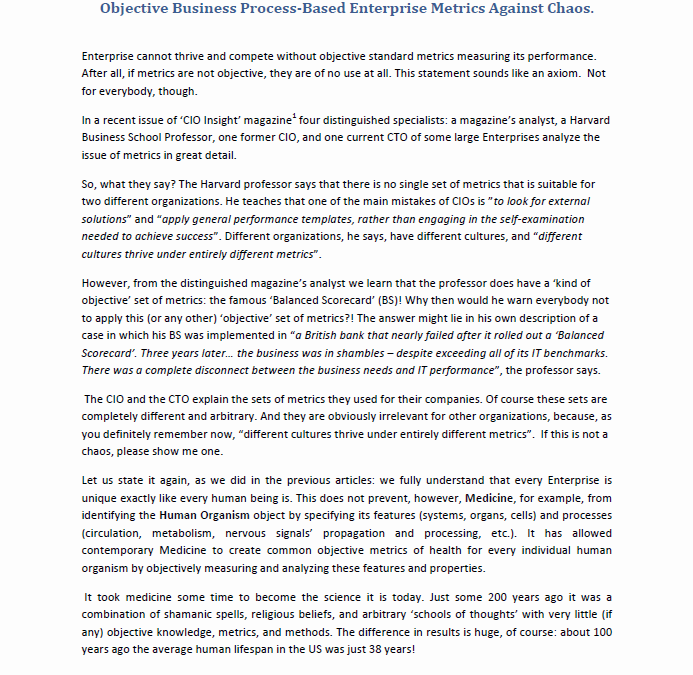

Enterprise cannot thrive and compete without objective standard metrics measuring its performance. After all, if metrics are not objective, they are of no use at all. This statement sounds like an axiom. Not for everybody, though.
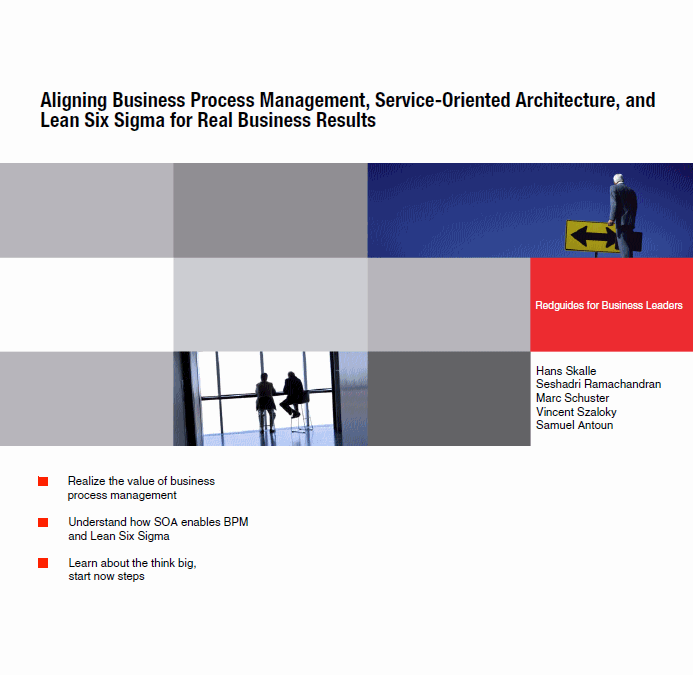
Lean Six Sigma and business process management have much in common. Both methodologies use iterative improvement and design techniques to deliver financial and performance benefits through better managed and optimized processes. Download this free comprehensive 52 page IBM Redguide to:
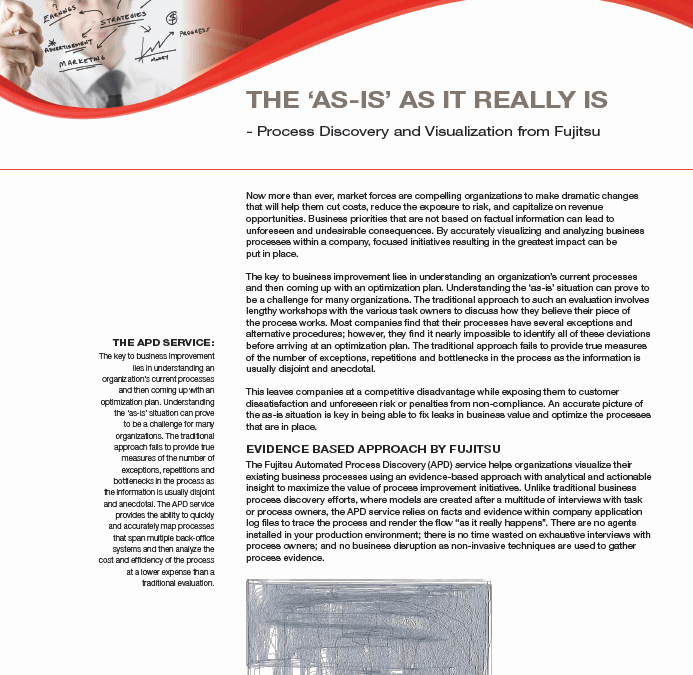
The biggest challenge with starting a process improvement initiative lies in understanding existing processes and knowing where to start. The traditional approach involves significant investment in time and resources to map out processes the outcome of which is often delayed and inaccurate. Read how Fujitsu’s Automated Process Discovery Service helps companies:
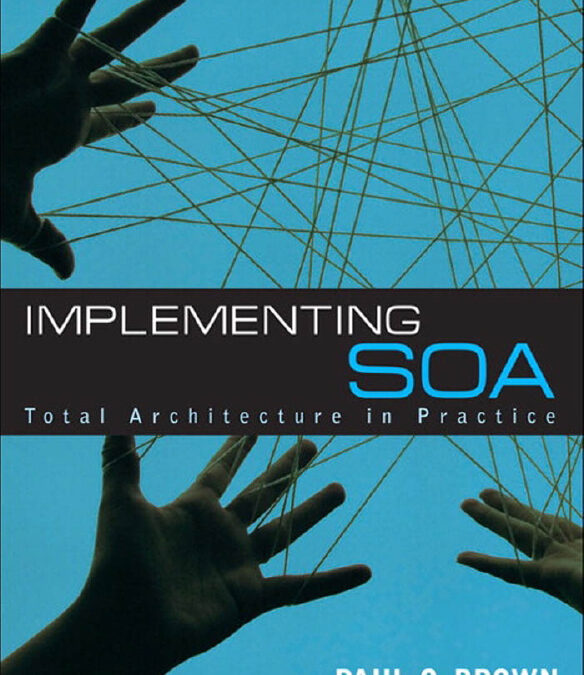
If you are an architect responsible for a service-oriented architecture (SOA) in an enterprise, you face many challenges. Whether intended or not, the architecture you create defines the structure of your enterprise at many different levels, from business processes down to data storage. It defines the boundaries between organizational units as well as between business systems. Your architecture must go beyond defining services and provide practical solutions for a host of complex distributed system design problems, from orchestrating business processes to ensuring business continuity.
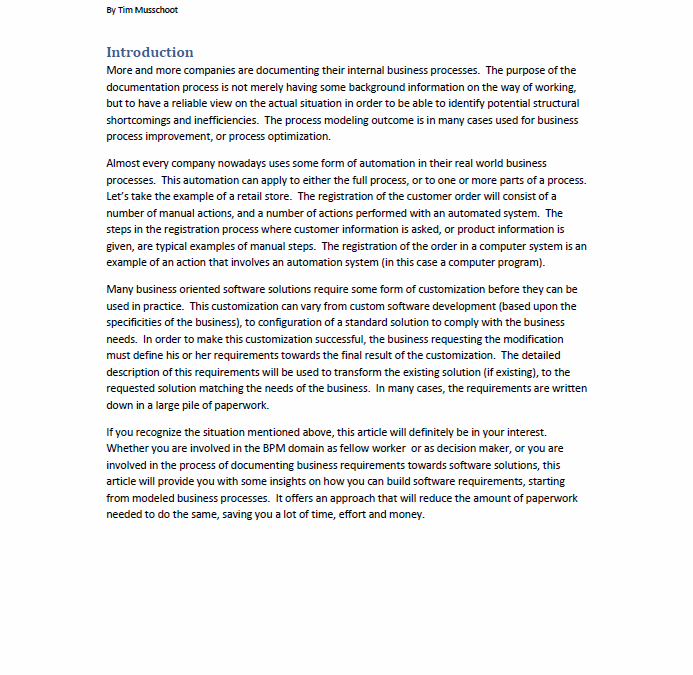
More and more companies are documenting their internal business processes. The purpose of the documentation process is not merely having some background information on the way of working, but to have a reliable view on the actual situation in order to be able to identify potential structural shortcomings and inefficiencies. The process modeling outcome is in many cases used for business process improvement, or process optimization.
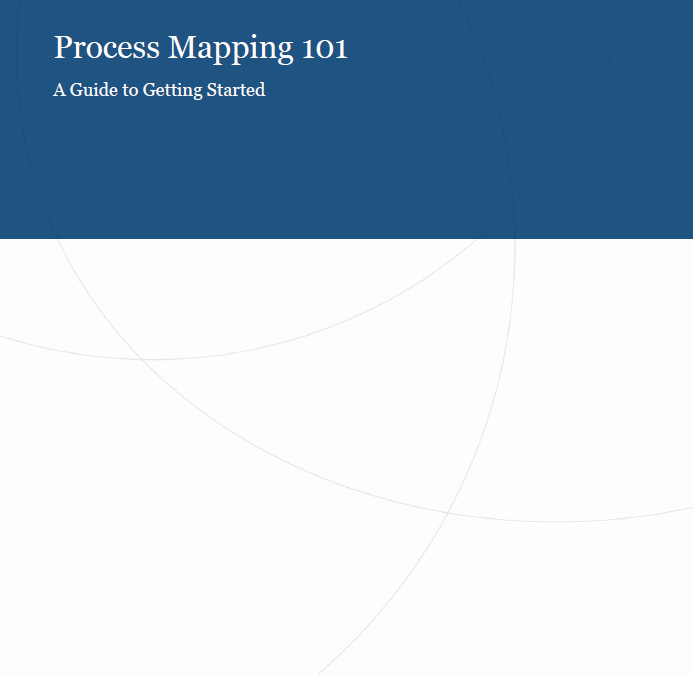
Before starting, it is important to understand process mapping’s place in the larger context of business process improvement. Improving your process typically starts with documenting how it works today, what we call the “as-is” process. The mapping of the as-is process can be divided into two phases: the Discovery Map and the Process Diagram.
It is the Discovery Map that we will focus on in this guide: who needs to be involved, what information goes into it, how to conduct the mapping session, and how to communicate your progress to stakeholders.
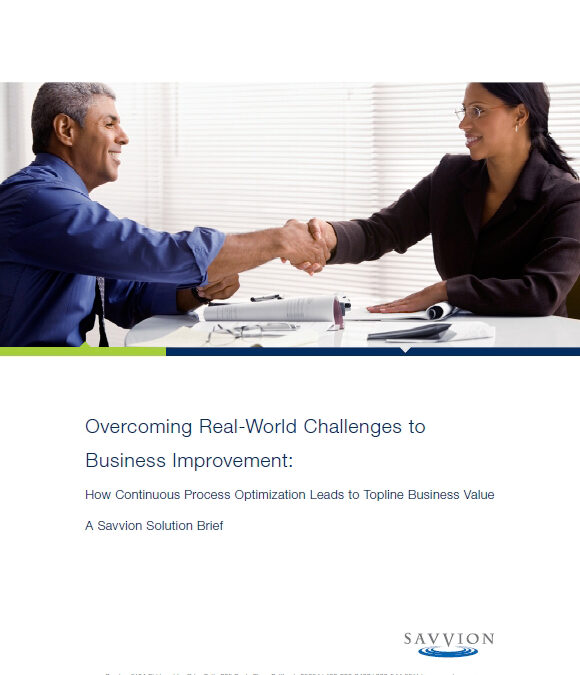
This Solution Brief highlights the reality versus fantasy of business improvement. It showcases how real-world incremental process optimization can be achieved to deliver real revenue increases and innovation. This paper focuses on the process improvement lifecycle and how Business Process Management (BPM), both as an approach and a technology, changes the status quo in order to put the power for innovation and improvement back into businesspeople’s hands.
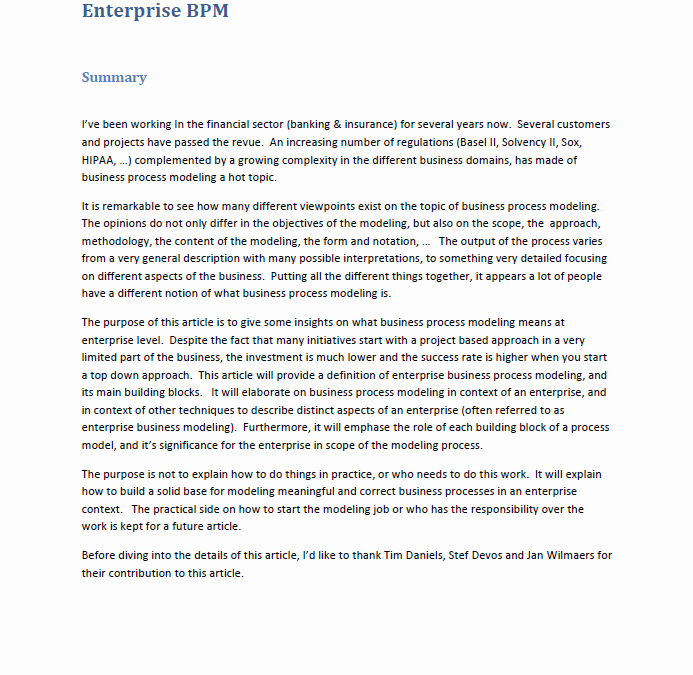
The purpose of this article is to give some insights on what business process modeling means at enterprise level. Despite the fact that many initiatives start with a project based approach in a very limited part of the business, the investment is much lower and the success rate is higher when you start a top down approach. This article will provide a definition of enterprise business process modeling, and its main building blocks.
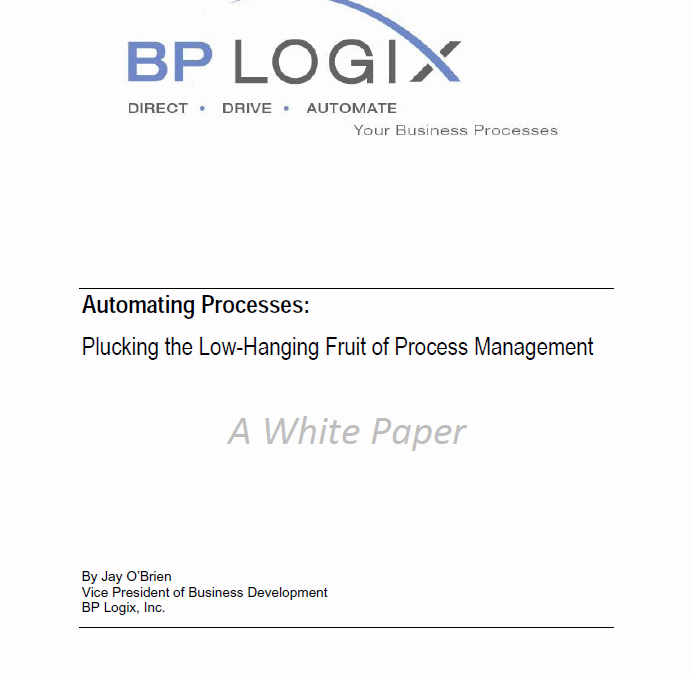
Business Process Management can conjure up images of tremendous complexity, months of planning, committees, meetings, boxes, arrows and squiggles depicting business processes. While BPM can be that complex, it needn’t be. You can move, and quickly, to pluck the low hanging *process automation) fruit for your company. This white paper offers some guidance, things to ponder, consider and act on as you contemplate how to automate your business processes.
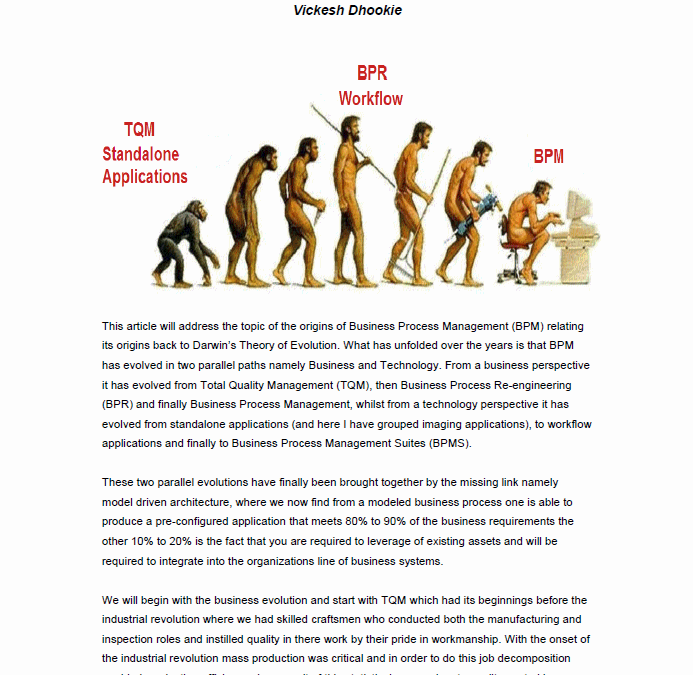
This article will address the topic of the origins of Business Process Management (BPM) relating its origins back to Darwin’s Theory of Evolution. What has unfolded over the years is that BPM has evolved in two parallel paths namely Business and Technology.
Everyone starts here.
You're looking for a way to improve your process improvement skills, but you're not sure where to start.
Earning your Business Process Management Specialist (BPMS) Certificate will give you the competitive advantage you need in today's world. Our courses help you deliver faster and makes projects easier.
Your skills will include building hierarchical process models, using tools to analyze and assess process performance, defining critical process metrics, using best practice principles to redesign processes, developing process improvement project plans, building a center of excellence, and establishing process governance.
The BPMS Certificate is the perfect way to show employers that you are serious about business process management. With in-depth knowledge of process improvement and management, you'll be able to take your business career to the next level.
|
Courses
|
|
|
|
Courses
|
|
|
|
Courses |
|
|
Business Architecture
|
|
|
|
Courses
|
|
|
|
Courses |
Certificate
|
|
Courses |
Certificate
|